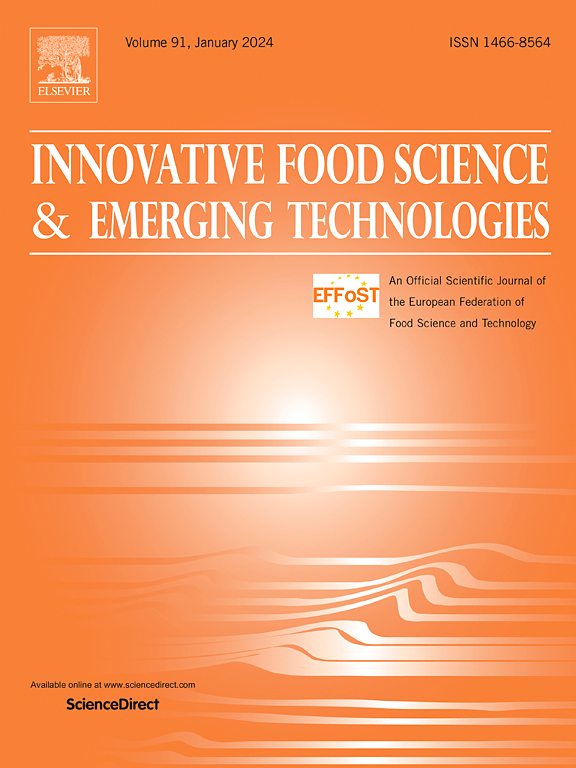Unraveling the real potential of liquid whey as media culture and microencapsulation material for lactic acid bacteria
IF 6.3
1区 农林科学
Q1 FOOD SCIENCE & TECHNOLOGY
Innovative Food Science & Emerging Technologies
Pub Date : 2024-12-09
DOI:10.1016/j.ifset.2024.103885
引用次数: 0
Abstract
This study aimed to evaluate the circular use of plain whey as media culture and microencapsulation material lactic acid bacteria (LAB). For this, Lacticaseibacillus paracasei ItalPN16 grew in a bioreactor (1 L) at different controlled pH using plain whey, and the sugar consumption, biomass yield, and protein hydrolysis were monitored. As results, at the pHs evaluated (4.5. 5.5, and 6.5) bacterial counts above 10 Log CFU/mL and a consumption of around 30 % of the whey sugars were obtained. Protein analysis revealed different proteolysis patterns according to the pH, resulting in more immunoglobulins (IgG) hydrolysis at pH 6, and increased free amino acids. After bacterial drying using its own growth media, the range for encapsulation efficiencies was 72–90 % for spray-dried (SD) and 82–99 % for freeze-dried (FD) powders. In addition, Fourier transform infrared spectroscopy analysis (FTIR) revealed specific variations in the hydrophilic interactions (-OH) in the microcapsules, according to drying method. The microencapsulated L. paracasei using fermented whey at pH 6 as wall material showed notable tolerance to simulated gastrointestinal conditions. Regarding the powder's stability, the FD method proved to be more effective in protecting the L. paracasei during storage at 4 °C and 25 °C. Thus, using plain whey as a culture medium in pH-controlled fermentation, followed by microencapsulation through freeze-drying, has proven to be a sustainable, scalable, and economical alternative for producing commercial lactobacilli cultures.
求助全文
约1分钟内获得全文
求助全文
来源期刊
CiteScore
12.00
自引率
6.10%
发文量
259
审稿时长
25 days
期刊介绍:
Innovative Food Science and Emerging Technologies (IFSET) aims to provide the highest quality original contributions and few, mainly upon invitation, reviews on and highly innovative developments in food science and emerging food process technologies. The significance of the results either for the science community or for industrial R&D groups must be specified. Papers submitted must be of highest scientific quality and only those advancing current scientific knowledge and understanding or with technical relevance will be considered.

 求助内容:
求助内容: 应助结果提醒方式:
应助结果提醒方式:


